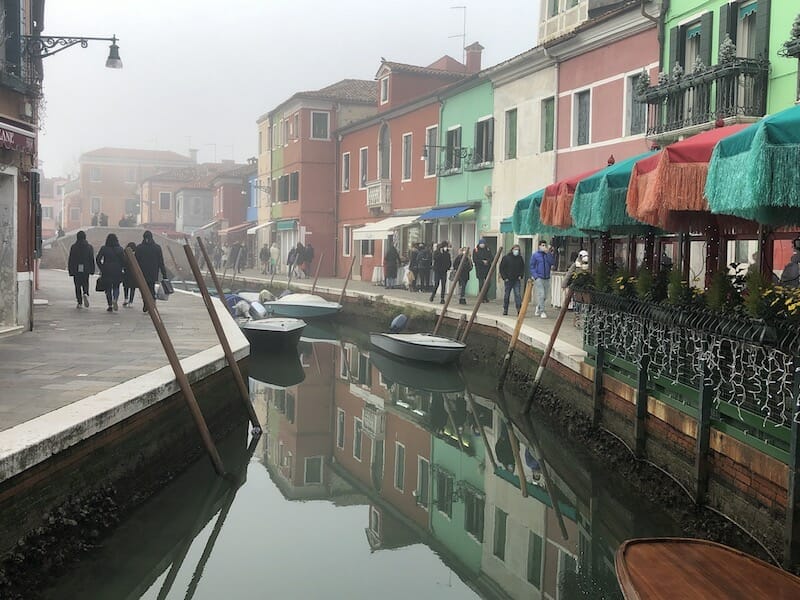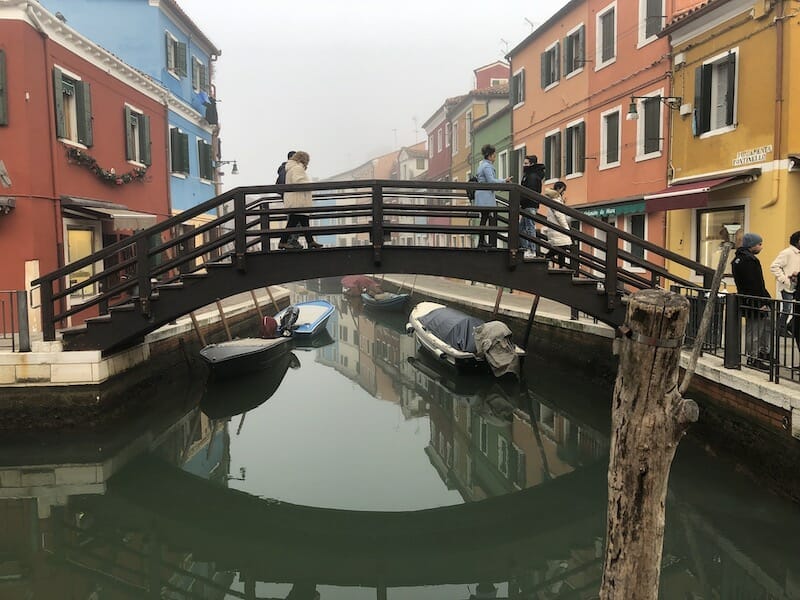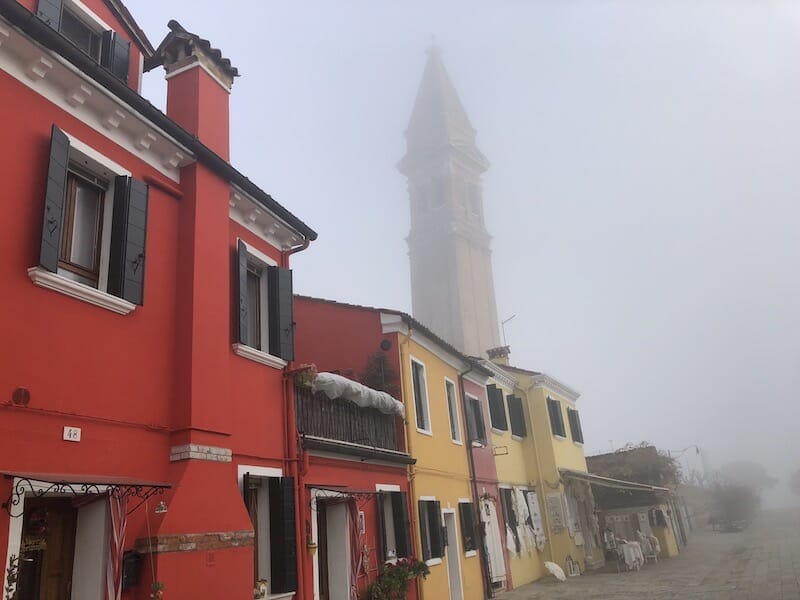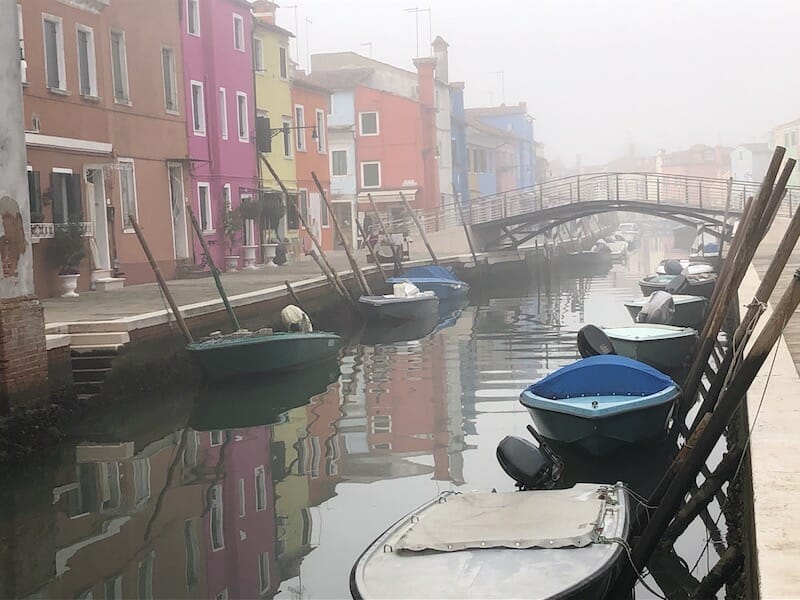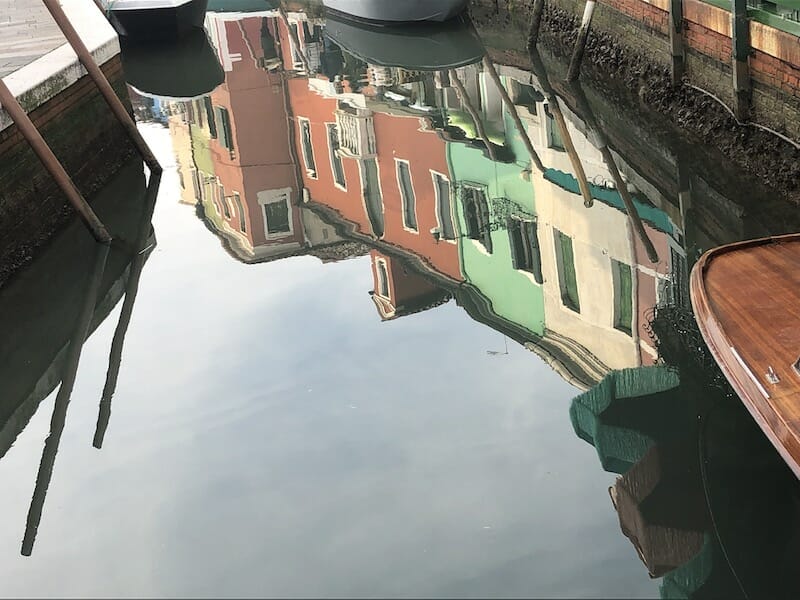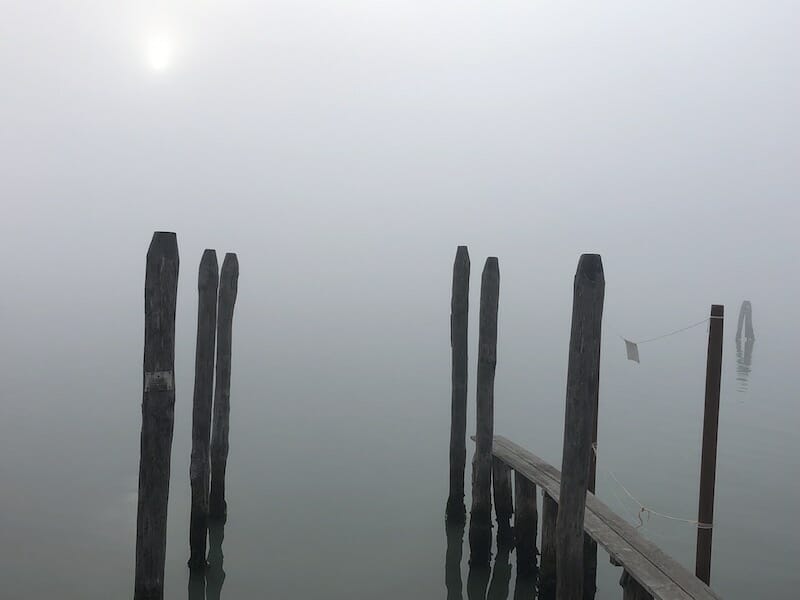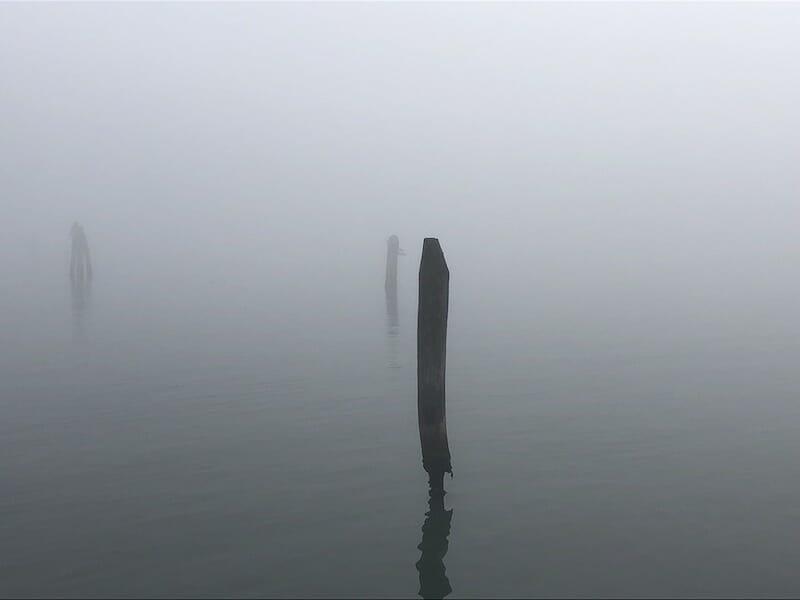As the ferry cuts through thick fog, an island silhouetted by cold beams of sunlight emerges on the horizon. The water taxi pulls into the dock, and pastel-colored houses reveal themselves, decorating the shoreline. Passengers shuffle off the deck onto the quiet streets of Burano. Taking in the town's distinctive features, they wander down narrow roads to their respective destinations on the island. With its canals and winding streets, the town shares many similarities with its larger cousin Venice while still preserving an island charm displayed in its shops and architecture. Despite heavy foot traffic there is a considerable silence; the fog smothers all disturbances.
As one continues to navigate the maze of streets, and alleys, the artery-like pathways eventually reveal the heart of the town, Rio della Giudecca and the Rio di Terranova. These wide-open pedestrian pathways are divided down the middle by a canal that slices through the center of the island. The aromas of cafes and pizzerias combine with crisp oceanic air and fill the streets. Even amongst the iPhone-selfie-taking visitors, the sixth-century settlement teems with history. Walking through the center along the canal, the Leaning Campanile of San Martino's church appears, defining itself as one of the dominant features of the island. From guidebooks we learn that the slanted bell tower of this Roman Catholic church itself dates to the sixteenth-century and holds true to Venice's Renaissance style architecture. The precarious angle of the tower reflects the town's defiance of the elements.
The Creative History of Burano, Italy
The island’s history is defined by not only its architecture but by lace-making. Throughout the town, scattered between cafes and restaurants, are various lace shops. Visitors can study the history of lace in Burano at the Lace Museum in the town’s center, found within the historic palace of Podestà di Torcello, in Piazza Galuppi reports that this was the site of Burano’s famous lace school from 1872 to 1970, and further explains that now visitors can take in the full history of Venetian lace and lagoon lace up to the present day.
Venturing across a wooden bridge, we find Mazzorbo, a rural secluded island whose history begins in 640. It’s a town which, in this writer’s opinion, provides a respite from the flocks of tourists. Passing a cluster of houses, we reach the end of this small island and find silvery still water, a reminder of the isolation that would prevail without all the tourist water-traffic.
The calm, in this writer’s opinion, revives the thousands of years of history of people living on this remote island, dating back to the Romans and the people of Altino according to the guidebooks. It may be apocryphal, but the usual explanation for the display of colors throughout the town, is that when fishermen were returning to the island, the unique pastel colors on display helped them recognize their home. Now, tourists step on these docks, drawn to the same houses that once beckoned fishermen through the mist.
As night settles, lights illuminate the island’s canals. Warm interiors of shops and restaurants invite locals and guests in to shelter from the cold night air. Boarding the water taxi to depart, exiting visitors are crammed like sardines into the boat. The houses slowly vanish back into the fog until only street lights remain. As these fade into darkness, we leave behind a distinctive community that clings to its roots amongst waves of tourists. In this writer’s opinion, tourism has eroded the intimacy of Burano and Mazzaboro, but these small island towns still offer unique culture, architecture, and cuisine while retaining their authenticity.
This destination is perfect for travelers who are enthusiasts of architecture and history. This town is perfect to get lost in. Travelers will be captivated by the distinctive houses and quaint squares found around various street corners.
HIGHLY RECOMMENDED
Nominate this for The Picture This Post BEST OF 2022???
Click Readers' Choice!
Images courtesy of Max D’Amato

About the Author: Max Harris-D’Amato
Max Harris-D’Amato is a freelance writer, who graduated from Columbia College Chicago in the spring of 2019 with a B.A. in multimedia journalism. In addition to both short and long form writing he has also directed a documentary, Surfing the Rust Belt, which he personally pitched, shot video, edited and conducted interviews for. In addition to writing, he has served with AmeriCorps on the Pacific Crest Trail and teaches English as a foreign language. He is passionate about traveling, current events and conservation.
Watch Max D’Amato’s film SURFING THE RUST BELT here.

